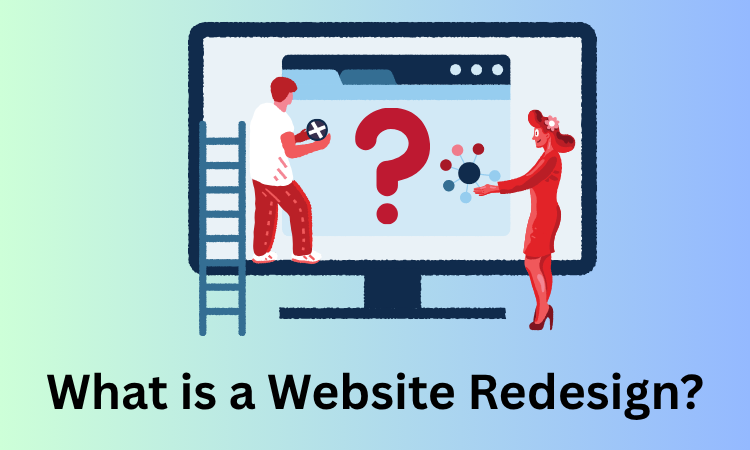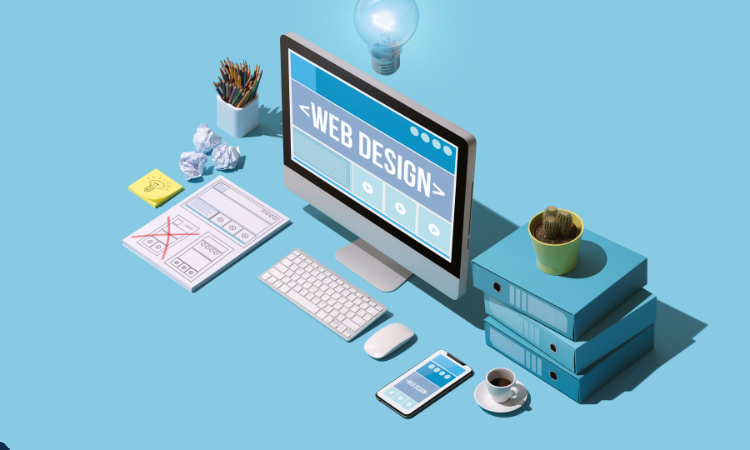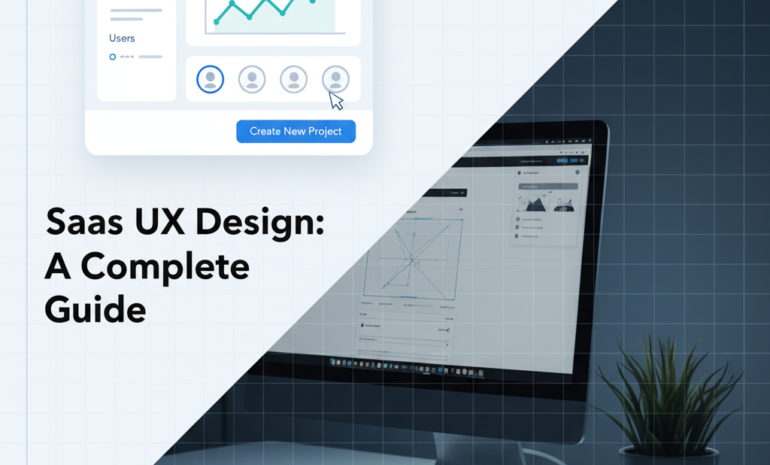Redesigning a website is more than changing its appearance. It affects how users connect with your brand.
Many businesses reach a stage where their current site feels outdated or no longer meets their needs.
Before starting a redesign, the big question is always about cost. Knowing the real cost helps you plan your budget and set clear goals.
This article explains what to expect while redesigning a website and what drives the price.
What is a Website Redesign?
Redesigning a website means more than just changing colors and layout. It is a chance to bring in new structure, modern features, and a better experience for your users.
A simple facelift might include updated graphics or fonts. A full redesign, on the other hand, may involve changing the entire way the site works, from menus and pages to forms and functions.
You also want your website to support new goals. Maybe you want to sell products now, or maybe your business has grown.
A redesign helps make sure your website matches where your business is today, not where it was years ago.
It is not only about looks, but it is about making your site work harder and smarter.

How Much Does It Cost to Redesign a Website?
Curious about the actual website revamp cost?
It all comes down to the scope of work, level of design, and the kind of features your business needs. Here is a simple breakdown to help you understand the price range more clearly.
| Redesign Type | Estimated Cost (USD) | Estimated Cost (AED) |
| Basic Redesign | $500 – $1,500 | AED 1,850 – AED 5,500 |
| Standard Business Redesign | $2,000 – $5,000 | AED 7,400 – AED 18,500 |
| Full Custom Redesign | $7,000 – $15,000+ | AED 25,900 – AED 55,000+ |
These are estimated figures and can change based on how many pages your website has, the design complexity, and the platform you use.
Some businesses only need minor design updates, while others go for a complete overhaul. Knowing the ballpark range helps you prepare your budget with confidence.

List of Factors Influencing Website Redesign Cost
Number of Pages and Design Complexity
The more pages your website has, the more time it takes to design and build them. A ten-page site with custom layouts will naturally cost more than a small, five-page site with basic formatting and limited design.
Each page requires content placement, design attention, and sometimes additional coding to look professional.
Custom Features and Functionality
Special features like contact forms, booking systems, payment methods, or other custom tools require extra development time. These are not built-in elements and need advanced coding or plugin setups.
More features mean more hours spent testing, adjusting, and ensuring everything works smoothly, which increases both the workload and the total cost.
Platform and CMS Preferences
Using a platform like WordPress is usually more cost-effective, while platforms like Webflow or Shopify with customized setups often need more time and experience.
Every content management system (CMS) has different tools, costs, and setup processes. The one you pick affects the budget depending on how flexible or complex it is.
Content Changes and Media Needs
Creating new content like writing fresh text, designing graphics, or adding photos and videos adds time and cost. If you already have high-quality content ready, it saves money.
But starting everything from scratch increases expenses, since each content type may involve different professionals, such as writers, designers, or photographers.
Mobile and Speed Optimization
A fast-loading website that looks great on all screen sizes is very important.
Making it mobile-friendly and optimized for speed requires technical work such as compressing images, improving code, and testing across devices.
Though this adds to the price, it plays a big role in keeping users engaged and satisfied.

What Decides the Final Redesign Cost?
The cost of a custom or WordPress website redesign is not just about design.
It depends on several key points that shape how much effort and time are needed.
- First, the number of pages plays a big role. A five-page website takes less time than a fifty-page one.
- Next, think about design complexity. A simple and clean layout is quicker to build than something filled with animations, videos, and interactive features.
- Then there is the question of content. Will you keep the old content, rewrite it, or add new sections?
- That affects both time and cost. Another factor is the platform you want to use, like WordPress, Shopify, or a custom CMS.
- Each has its own process and technical requirements. Features like contact forms, booking tools, or live chat also add to the cost.
- Lastly, mobile responsiveness and page speed improvements are now standard, but they still require technical effort.
All of these pieces fit together to shape the total amount you will pay.
Cost Comparison of Freelancer vs Web Agency
Choosing between a freelancer and an agency has a direct impact on what you pay. Freelancers usually charge less, especially for small projects. A simple redesign from a freelancer might cost around $500 to $2,000.
You may get good work, but there could be limits in skillset, availability, or project management. Agencies, on the other hand, charge more, often starting from $3,000 and going much higher.
The reason is they offer a team approach: designers, developers, content writers, and project managers all working together.
This often means faster delivery and better planning. Agencies also tend to offer support after the project is done, which is helpful if issues come up later. The cost difference is real, but it reflects the level of service you get.
If your site is small and the work is simple, a freelancer might be a good fit. But for complex redesigns, agencies often offer more complete solutions.

Reasons to Redesign Your Website
Outdated Design or Structure
A website that looks old can instantly turn users away. Outdated layouts, dull colors, and poor navigation make your brand appear unprofessional.
A modern redesign helps your business look fresh, relevant, and reliable. It improves trust, user experience, and overall flow so visitors feel confident exploring your products or services.
Low Engagement or Conversions
If visitors are not clicking, signing up, or buying, your website design may be the reason. A confusing layout or poor calls to action can hurt performance.
Redesigning your site with clear messaging, better navigation, and user-friendly elements can increase engagement and turn more visitors into loyal customers or leads.
Poor Mobile Experience
Most users browse websites on their phones. If your site is slow, hard to read, or broken on mobile devices, you will lose valuable traffic.
A mobile-first redesign ensures fast loading, easy navigation, and a clean look on all screen sizes, helping you connect better with today’s mobile-first audience.
Rebranding or Business Shifts
When your business grows or changes direction, your website must reflect those updates. Keeping the old design while your message or services have changed creates confusion.
A redesign brings everything into alignment, colors, tone, layout, and messaging, so your website matches your current brand and speaks clearly to your target audience.
New Features or Product Changes
Adding new services, tools, or content like a store, blog, or booking system often needs more than a quick update. Old sites may not support them properly.
A redesign makes room for new features, ensuring they work smoothly and look consistent with the rest of your design and brand structure.

Why Choose BrandOut for Website Redesign Services?
BrandOut offers website redesign services with clear pricing, honest communication, and results that make sense for your business.
If you need a small refresh or a complete transformation, our team plans each step around your goals.
We handle UX, UI, and web development to ensure your redesigned site looks great and functions smoothly. No surprises, just dependable service and clean design that supports your business growth.
Final Thought:
Knowing the real cost of website redesign helps you plan better and avoid guesswork. Smart decisions begin with clear numbers and realistic goals.
When you understand what drives the cost, like features, design needs, and technical support, you can make informed choices that match your budget.
A well-planned redesign does not just improve your site’s look; it supports your business growth in the long run.
If you follow the points shared in this article, our team at BrandOut is ready to provide the exact website redesign services your business needs.
Most Asked Questions:
How often should you redesign a business website?
A business website should be redesigned every 2 to 3 years. Design trends change, user expectations evolve, and new technology becomes available.
If your site starts to look outdated, loads slowly, or no longer supports your goals, it is time for a refresh. Regular updates also help improve user experience and keep your brand message consistent with your current business direction.
Is It Worth Spending on a Redesign?
Spending on a website redesign may feel like a big move, but it often brings great value. A modern design builds trust, improves user experience, and helps turn visitors into customers.
When paired with fast loading and better content, your site becomes more than just a page, it becomes a tool for growth. You are investing in stronger structure, clearer messaging, and better results for your business.
How much does it cost to design a website on Fiverr?
On Fiverr, website design prices vary based on the seller’s experience and the project’s complexity. Basic one-page sites can start as low as $50, while more detailed multi-page designs may range from $200 to $1,000 or more.
Always review the seller’s work samples, ratings, and what is included in the package before placing an order to ensure it fits your expectations and needs.
How much to charge for logo design?
Logo design pricing depends on experience, quality, and client needs. Beginners might charge $50 to $150, while skilled designers may ask for $300 to $1,000 or higher. Custom logos with deep brand strategy and multiple revisions cost more.
Pricing should reflect the time, creativity, and business value the logo brings, so setting a fair rate that matches your skill level is important.




